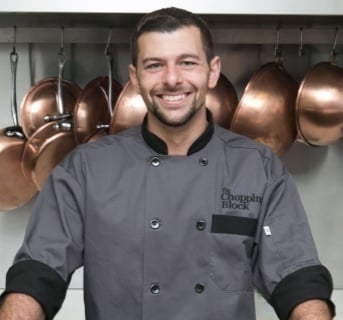It's that time again for everyone to commit to healthy foods and exercise. Lots of people are amped about getting on the self-betterment train and go all in with meal prep, special workouts and dietary consultations. As a private chef and food prepper myself, I get asked on a regular basis for tips on healthy carbs for those folks avoiding the classic potato and rice starches. My answer is always sweet potatoes! I understand that they can become a bit mundane over time, but the joy of sweet potatoes goes farther than many people think.
Sweet potatoes are best known for being rich, sweet, dessert-like starches that people smother in butter, brown sugar, and maybe some toasted pecans around the holidays. The flip side of this is the Dr. Jekyll of sweet potatoes: the diced sweet potato next to the broccoli and roasted chicken breast. As these are two gruesome extremes, I would like to open the middle ground and show that a simple sweet potato can go through many phases dependent on how long they are cooked, how they are cut, and what temperature they are roasted at. This is not to say the cooking technique isn’t a huge piece as well, but that creates variables to really prove my point.
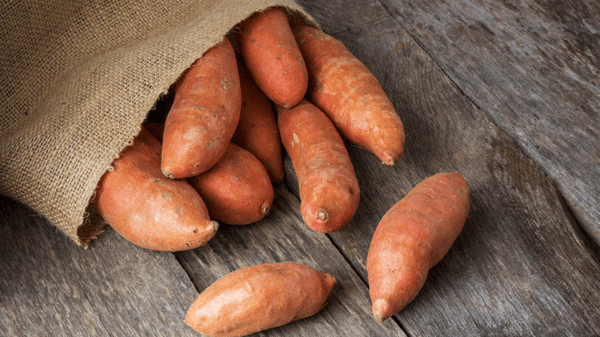
Let's cover a few basics to show you that sweet potatoes are nutritionally worth the work. For a 1 cup portion of sweet potatoes, you are starting out with a rather average, but reasonable 180 calories and 41.4 grams of carbohydrates. That is quickly followed by a grandiose 6.6 grams of fiber and 4 grams of protein. Then it really kicks up to amount to 29% of your daily value of vitamin B6, 27% potassium, 65% vitamin C, and a whopping 769% vitamin A! For those of you not picking up what I am putting down, sweet potato is a few notches off from being in the superfood category, and those are just a few of its showcase points.
I also think flavor is another tick in the favor of sweet potatoes. They have a naturally sweet and butter flavor and when you brown up the outside a bit, they create a delicious balance of caramelized and deep sweetness to balance the brighter flavors of the insides. I have been using pureed sweet potatoes in my baked goods as a substitute for eggs for years, along with adding them to sauces, soups, and to brighten my plates.
While I catch my breath after throwing down all those info bombs, we should look at the reason to bring this whole subject to light. It kills me to see people say that sweet potatoes are “meh” because the majority of people will dice and either boil and mash or toss with a little oil, salt and pepper and roast till tender. I am not saying these preparations are wrong, but it does take the fire out of the flame.
If we look at the whole sweet potato and what flavors we are achieving with these basic styles of preparation, you will see that you are mainly taking a high-fiber starch and tickling at the level of sweet potential by roasting. Then you are almost slapping the sweet potato in the face by boiling and mashing because you are not enhancing the flavor in the slightest. In fact, you are really diluting it by adding butter and taking the spotlight off the showcase.
I am going to give you a little secret and explain that the simplest technique known as roasting whole is probably my favorite for these little gems. By simply pre-heating your oven to 340°F and stabbing a ton of little holes with the tip of a knife or a fork to prick the skin, you are doing a few minor things.
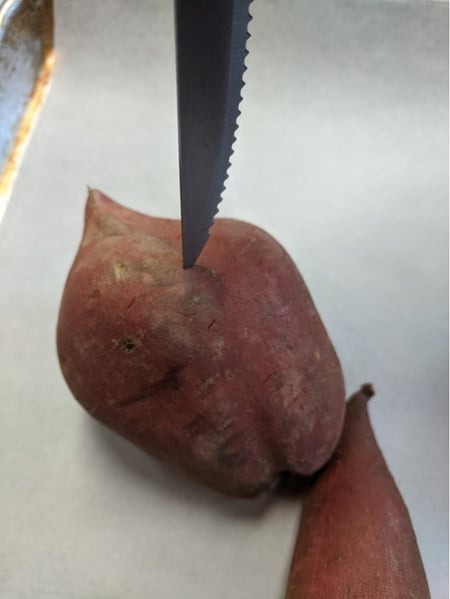
The holes are going to be a wonderful escape for steam. As the sweet potato cooks, it begins to soften and break down encapsulated and bonded water molecules that all plant cells grow with and thrive from. When those water molecules heat and turn into steam, they will escape from the holes and thus lower the water percentage of the potato. Some may think this is nothing special, but this is the first step to a miraculous event. The temperature on the inside of your potato begins to rise! As the process continues, the temperature will continue to rise until it hits your wonderous 340°F. No big deal, right? Nope, considering sugars begin to caramelize at about 320°F, this 340°F is a sweet spot that takes all of the natural fibers and begins to break them down into basic carbohydrates and then further into sugars and then further into simple sugars and boom: sweet nectar of the caramelized gods.
Now this is not a quick process, but it is worth the wait! I traditionally will cut a well-roasted sweet potato in half and enjoy it with a touch of salt and pepper or pull it out of the skin and puree it up with salt and pepper to use as an accompaniment. This can be turned into soups or sauces. I have even used it to thicken my tomato bisque and dim down the acidity, or a few ounces to added to my vegan Mac and cheese sauce to thicken and give that traditional orange hue. Here's the non-vegan version.
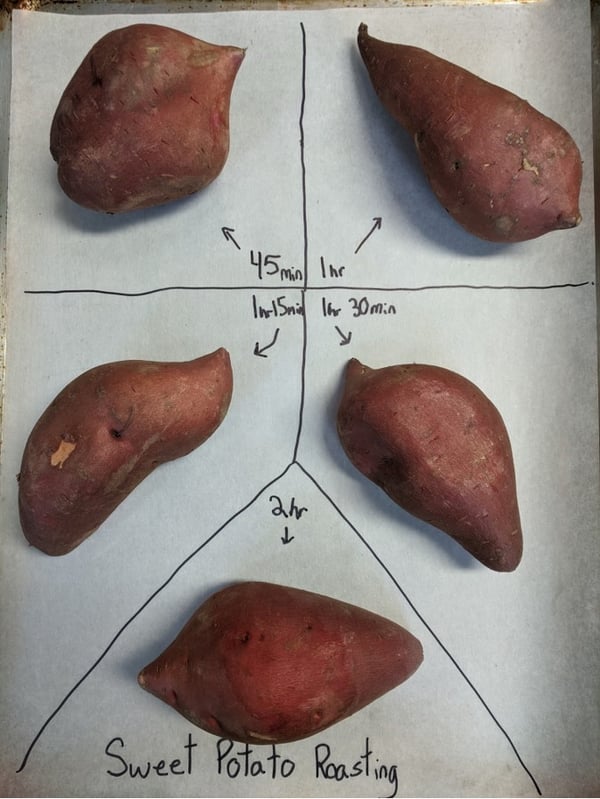
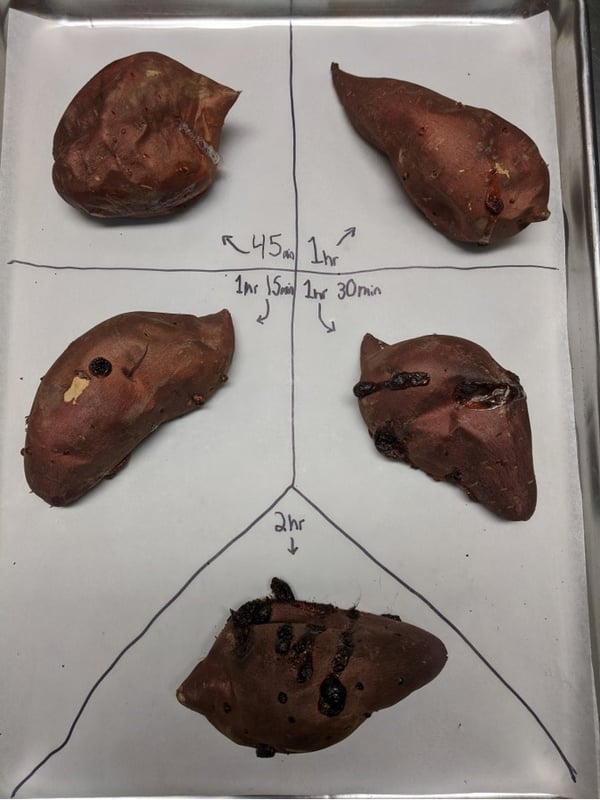
I have done a bit of a time chart to show you the levels of reduction and flavor concentration through the cooking process. Below each potato is the time that it was cooked, and I used all small to medium (5-7 ounce) potatoes. I personally aim for the 1 hour and a half mark for most of my baking uses. The 2 hour mark is wonderful for sweet potato soups and to be used as a sweetener in savory items. The 1 hour and 15 minute mark is a great mashed sweet potato or puree and the 1 hour mark is fantastic for a classic baked sweet potato. Don’t forget the 45 minute mark too, because I will often roast to this point then cool and coin them to be seared as a wonderful side dish.
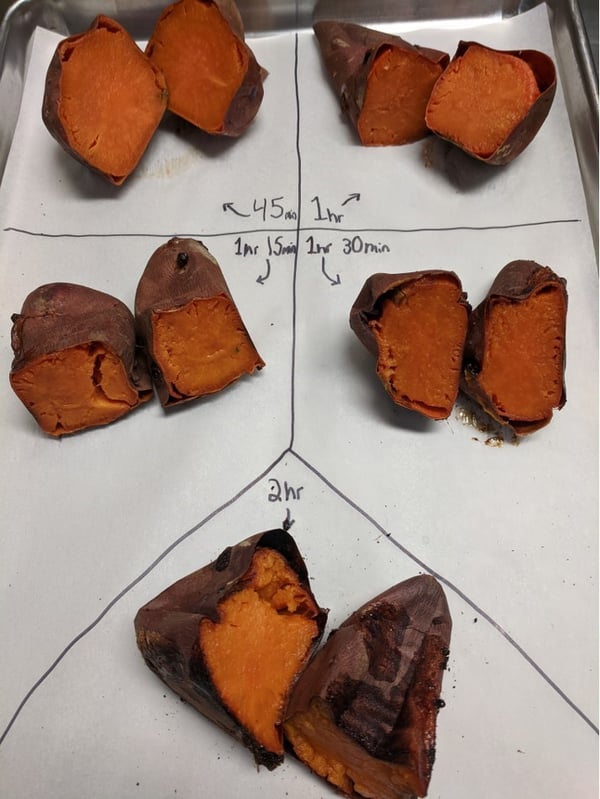
Sweet potatoes count for this week's #tcbcookingchallenge in our private Facebook group, so experiment with the above method of roasting at different times, and post your results to the group.
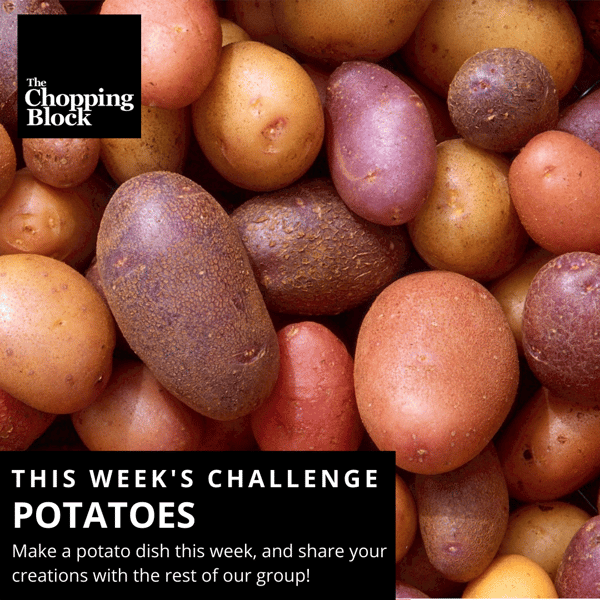
If you want more sweet potato cooking tips, join us for a virtual Date Night: Let it Snow class on Saturday, February 6 at 6:30pm CST. You'll learn how to make:
- Smothered Pork Chops with Caramelized Onion and Dried Cherry Relish
- Oven-Roasted Sweet Potatoes


